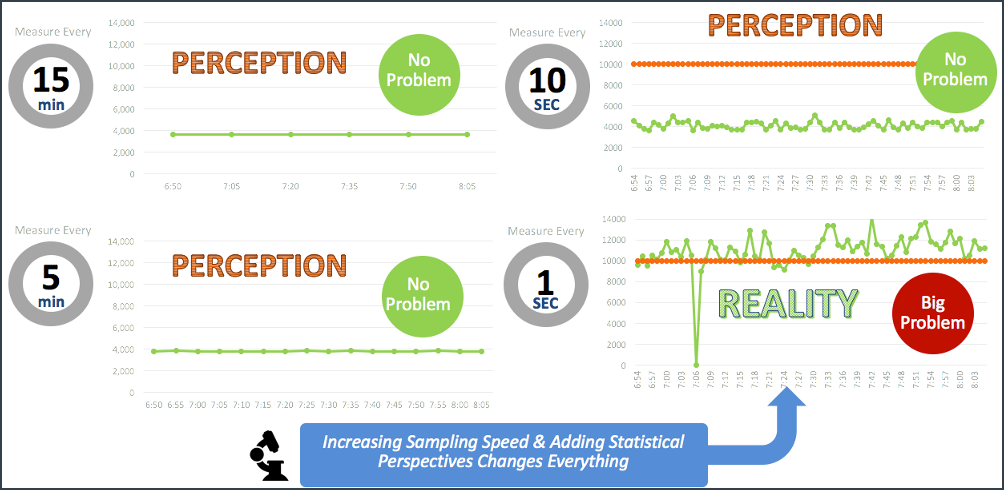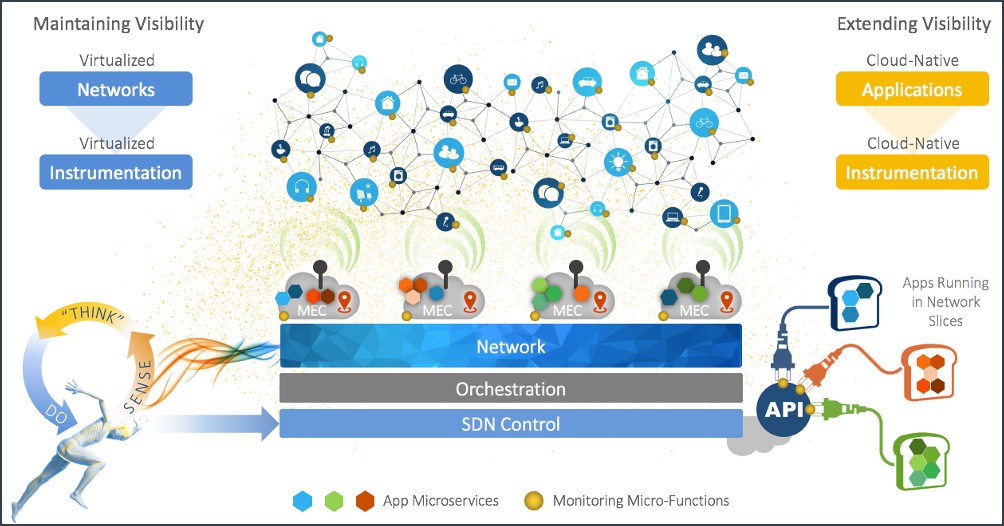5G success for mobile operators depends on high-quality, granular network and application performance data.
Here’s a truth about 5G that mobile network operators (MNOs) are facing: insight into network and application performance is only as good as the data collected for analysis. Garbage in, garbage out.
‘Garbage’ data creates an unfortunately common scenario where perception of how well a network is working differs significantly from how that performance affects the user experience. Aligning performance perception with experience reality is a nonnegotiable aspect of being 5G-ready.
Is perfect 5G even possible?
To build a network capable of supporting 5G, operators face two overarching challenges:
- Speeds and feeds: dramatic speed increases involving near-zero latency, with true ‘always on’ availability—enabled by mesh backhaul.
- Monetizing 5G by combining network slicing with network-as-a-platform to support new apps and digital service revenue.
Both are possible to overcome, but only by migrating network and application performance management beyond human control, into the realm of artificial intelligence (AI) and machine learning.
A new nervous system for 5G
5G can be defined as a highly fragmented, dynamic, multi-tenant, mobile edge computing (MEC) environment. Here, cloud-native applications and monitoring microservices will cohabitate, with software-defined networking (SDN) control acting as a ‘nervous system,’ using its feedback to optimize digital services.
This nervous system is a complex, dynamically changing, ‘live’ entity (as, indeed, 5G will be also) which demands that:
- Performance data be dynamic and precise, to accurately feed AI and analytics engines with meaningful feedback.
- Network slice resources be allocated based on capacity and other requirements that vary by service and time of day
- Measuring parts of the service path be done continuously, aligned with dynamic segmentation.
The proper functioning of this nervous system—which undergirds automated SDN for self-correcting adaptive networks—supports 5G as a growth platform for operators. The business value of this platform requires that operators operators transform themselves into digital service providers—purveyors of a ‘mobile cloud’.
5G as mobile cloud
The 5G network environment is essentially a mobile cloud, or ‘distributed data center’ (aka network as a platform)—combining ubiquitous multi-access edge compute (MEC) with location awareness, exceptionally low latency, and alway-on mobile access.
No more ‘dumb pipe’ access! Instead, the future lies with content, application, and service providers consuming the mobile cloud on-demand using open APIs. For the first time in the cloud economy, application performance can be guaranteed all the way from the cloud computer used to run the application through to the absolute mobile edge of the mobile user…or machine.
Machine learning, using quality data, underpins the success of this 5G mobile cloud.
Machine learning: foundation for 5G
Machine learning is fueled by data, and it only works as well as the quality of that data. It’s not enough to have velocity (real-time data), volume (broad geographic coverage), and variety (data from many sources across all network layers); for 5G networks, it’s also necessary to have quality of data: data that’s accurate and granular.
The more accurate and granular data is, the faster machine learning can converge. If data quality is poor, machine learning will fail.
MNOs may have big data, analytics, and machine learning, but if they don’t have high accuracy, high granularity, and ubiquitous visibility, it is not possible to use machine learning to glean actionable insight that’s actually meaningfully aligned with business goals.
When operators are able to put their networks on intelligent autopilot by leveraging quality big data for machine learning, they will be successful with 5G.
Making a difference in 5G readiness
As the industry leader in network performance visibility, Accedian continues to innovate around fully-automated networks as a foundation for 5G.
Here are a few examples of what that means:
- Our solutions are built on proven virtualization: scalable, reliable performance monitoring that can be spun up and down on demand the same way as virtual services.
- We offer very granular monitoring in terms of packets per second (pps), from 1pps up to 10,000pps in 1pps increments, unlike other vendors with more coarse increments or ‘steps.’
- Virtual routing functions that can run in multiple Layer 3 domains.
- Interoperability to take advantage of existing reflectors. Plus, we offer our own lightweight software reflector that can be loaded onto white boxes and COTS servers.
- Service path segmentation measurement.
- Measuring QoS and service path changes in terms of distance/hops the service is traversing.
Ready for 5G… or not?
How can an operator be sure their network is ready for 5G? Simple (or, maybe not): use performance validation that’s capable of seeing beyond the requirements of today. This must be done not after implementing new technologies, but before and during that implementation.
Or, put another way, if any of these are true…
- The accuracy, granularity, and precision of information obtained by network performance data is questionable.
- Performance validation relies on aged (>1 minute) or averaged data.
- Capacity planning involves using a “safety margin” or rule-of-thumb.
…then then network is probably not ready for 5G!
Get in touch with Accedian. We can help!

 Improved delivery, better visibility: How Accedian and VMware are working together to help CSPs navigate the 5G world
Improved delivery, better visibility: How Accedian and VMware are working together to help CSPs navigate the 5G world
 Adding a new dimension of visibility to the Cisco Full-Stack Observability portfolio with Accedian Skylight
Adding a new dimension of visibility to the Cisco Full-Stack Observability portfolio with Accedian Skylight


